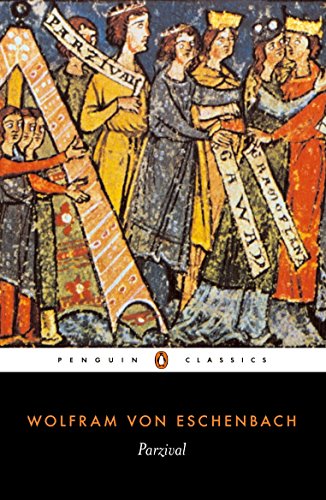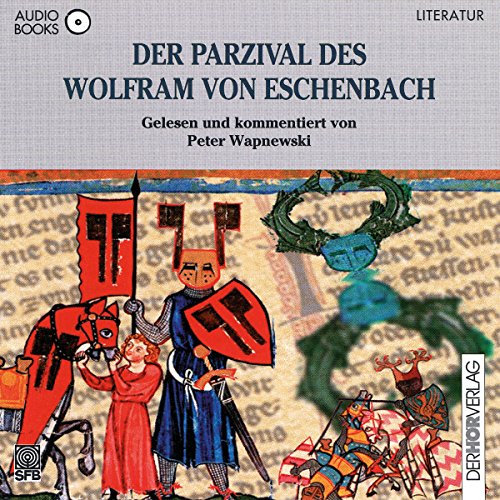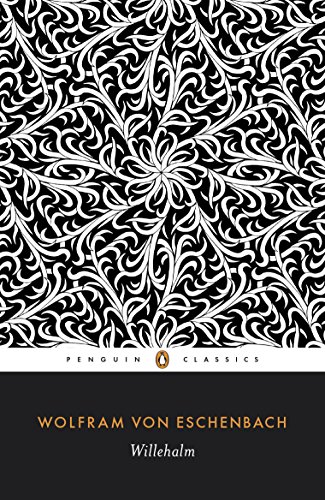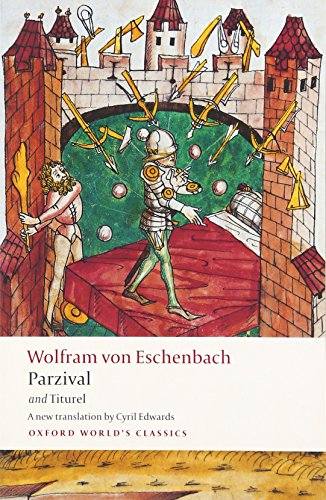Background
Wolfram von Eschenbach was born about 1170 into a family of ministerial or lackland knights, probably in Wolframs Eschenbach (so named since 1917) in central Franconia near Ansbach.



( Composed in the early thirteenth century, Wolfram von E...)
Composed in the early thirteenth century, Wolfram von Eschenbach's Parzival is the re-creation and completion of the story left unfinished by its initiator Chretien de Troyes. It follows Parzival from his boyhood and career as a knight in the court of King Arthur to his ultimate achievement as King of the Temple of the Grail, which Wolfram describes as a life-giving Stone. As a knight serving the German nobility in the imperial Hohenstauffen period, the author was uniquely placed to describe the zest and colour of his hero's world, with dazzling depictions of courtly luxury, jousting and adventure. Yet this is not simply a tale of chivalry, but an epic quest for spiritual education, as Parzival must conquer his ignorance and pride and learn humility before he can finally win the Holy Grail.
http://www.amazon.com/gp/product/0140443614/?tag=2022091-20

(Parzival, Sohn des Königs von Anschouwe, wächst bei seine...)
Parzival, Sohn des Königs von Anschouwe, wächst bei seiner Mutter Herzeloyde in der Wildnis auf. Er schwankt zwischen einem Leben als Ritter und dem heiligen Gral. Nach langen Abenteuerfahrten findet er die Erlösung: er wird Gralskönig. Der Lesung zugrunde gelegt ist neben der Übersetzung von Wolfgang Mohr der Mittelhochdeutsche Text.
http://www.amazon.com/gp/product/B00T6BEHQ2/?tag=2022091-20

(Wolfram von Eschenbach (fl. c. 1195-1225), best known as ...)
Wolfram von Eschenbach (fl. c. 1195-1225), best known as the author of Parzival, based Willehalm, his epic poem of military prowess and courtly love, on the style and subject matter of an Old French chanson de geste. In it he tells of the love of Willehalm for Giburc, a Saracen woman converted to Christianity, and its consequences. Seeking revenge for the insult to their faith, her relatives initiate a religious war but are finally routed. Wolfram's description of the two battles of Alischanz, with their massive slaughter and loss of heroes, and of the exploits of Willehalm and the quasicomic Rennewart, well displays the violence and courtliness of the medieval knightly ideal. Wolfram flavors his brutal account, however, with tender scenes between the lovers, asides to his audience, sympathetic cameos of his charactersespecially the womenand, most unusually for his time, a surprising tolerance for 'pagans'.
http://www.amazon.com/gp/product/0140443991/?tag=2022091-20

(Written in the first decade of the thirteenth century, Pa...)
Written in the first decade of the thirteenth century, Parzival is the greatest of the medieval Grail romances. It tells of Parzival's growth from youthful folly to knighthood at the court of King Arthur, and of his quest for the Holy Grail. Exuberant and gothic in its telling, and profoundly moving, Parzival has inspired and influenced works as diverse as Wagner's Parsifal and Lohengrin, Terry Gilliam's film The Fisher King, and Umberto Eco's Bandolino. This fine translation, the first English version for over 25 years, conveys the power of this complex, wide-ranging medieval masterpiece. The introduction places Eschenbach's work in the wider context of the development of the Arthurian romance and of the Grail legend. This edition also includes an index to proper names and a genealogical table, and is the first to combine Parzival with the fragments of Titurel. About the Series: For over 100 years Oxford World's Classics has made available the broadest spectrum of literature from around the globe. Each affordable volume reflects Oxford's commitment to scholarship, providing the most accurate text plus a wealth of other valuable features, including expert introductions by leading authorities, voluminous notes to clarify the text, up-to-date bibliographies for further study, and much more.
http://www.amazon.com/gp/product/0199539200/?tag=2022091-20
Wolfram von Eschenbach was born about 1170 into a family of ministerial or lackland knights, probably in Wolframs Eschenbach (so named since 1917) in central Franconia near Ansbach.
Roving, he practiced knighthood in Bavaria, Swabia, and Styria, as well as at home.
He was one of the brilliant group of Minnesingers whom the Landgrave Herrmann of Thuringia gathered round him at the historic castle of the Wartburg.
The Eschenbach from which he derived his name was most probably Ober-Eschenbach, not far from Pleinfeld and Nuremberg; there is no doubt that this was the place of his burial, and so late as the 17th century his tomb was to be seen in the church of Ober-Eschenbach, which was then the burial place of the Teutonic knights.
Certainly he was a poor man, for he makes frequent and jesting allusions to his poverty.
The date of Wolfram's death is uncertain.
We know that he was alive in 1216, as in Willehalm he laments the death of the Landgrave Herrmann, which took place in that year, but how long he survived his friend and patron we do not know.
Wolfram von Eschenbach lives in, and is revealed by, his Work, which shows him to have been a man of remarkable force and personality.
He has left two long epic poems, Parzival and Willehalm (the latter a translation of the French chanson de geste Aliscans), certain fragments, Titurel (apparently intended as an introduction to the Parzival), and a group of lyrical poems, Wackier-Lieder.
These last derive their name from the fact that they record the feelings of lovers who, having passed the night in each other's company, are called to separate by the cry of the watchman, heralding the dawn.
These Tage Lieder, or Wackier Lieder, are a feature of Old German folk-poetry, of which Wagner has preserved the tradition in the warning cry of Brangaene in the second act of Tristan.
These are the leading points.
The poem is divided into sixteen books.
Books i. and ii. , unrepresented in Chretien, relate the fortunes of the hero's father, and connect the story closely with the house of Anjou; the four concluding books agree with the commencement, and further connect the Grail story with that of the Swan Knight, for the first time identifying that hero with Parzival's son, a version followed by the later German romance of Lohengrin.
From iii to xii. , inclusive, the story marches pari passu with the Perceval of Chretien de Troyes, at one moment agreeing almost literally with the French text, at the next introducing details quite unknown to it.
At the conclusion Wolfram definitely blames Chretien for having mistold the tale, while a certain Kiot, the Provengal (whom he has before named as his source), had told it aright from beginning to end.
The Parzival is a soul-drama; the conflict between fight and darkness, faith and doubt.
Theme, and the evolution of the hero's character is steadily and consistently worked out.
The teaching is of a character strangely rat variance with the other romances of the cycle.
Instead of an asceticism, based upon a fundamentally low and degrading view of women, Wolfram upholds a sane and healthy morality; chastity, rather than celibacy, is his ideal, and a loyal observance of the marriage bond is in his eyes the highest virtue.
He is in no sense a master of language, as was Gottfried von Strassbourg.
Wolfram and Gottfried were both true poets, but of widely differing style.
He was one of the brilliant group of Minnesingers whom the Landgrave Herrmann of Thuringia gathered round him at the historic castle of the Wartburg.
The Eschenbach from which he derived his name was most probably Ober-Eschenbach, not far from Pleinfeld and Nuremberg; there is no doubt that this was the place of his burial, and so late as the 17th century his tomb was to be seen in the church of Obcr-Eschenbach, which was then the burial place of the Teutonic knights.
Certainly he was a poor man, for he makes frequent and jesting allusions to his poverty.
But this is somewhat perplexing, for these poems are beyond all doubt renderings of French originals.
( Composed in the early thirteenth century, Wolfram von E...)
(Written in the first decade of the thirteenth century, Pa...)
(Parzival, Sohn des Königs von Anschouwe, wächst bei seine...)
(Wolfram von Eschenbach (fl. c. 1195-1225), best known as ...)
To account for Wolfram's not always orthodox religious views, some critics have discovered traces of Albigensian heresies in Parzival, but most writers credit Wolfram with a devout layman's piety.
